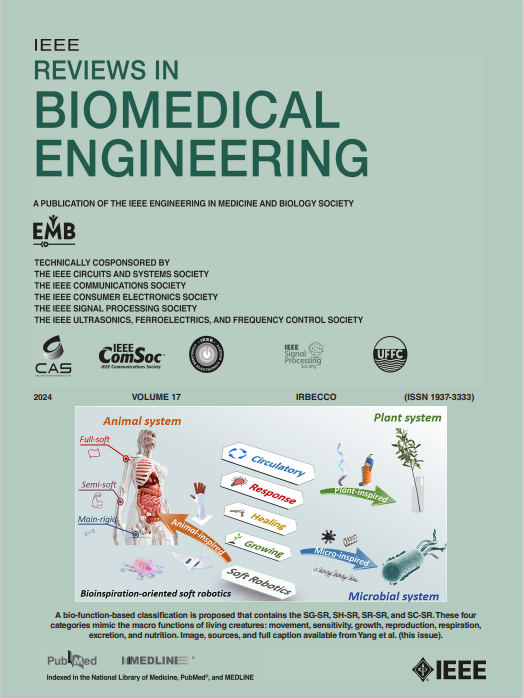Recent Advances in Biosensors for Detection of COVID-19 and Other Viruses
IF 17.2
1区 工程技术
Q1 ENGINEERING, BIOMEDICAL
引用次数: 18
Abstract
This century has introduced very deadly, dangerous, and infectious diseases to humankind such as the influenza virus, Ebola virus, Zika virus, and the most infectious SARS-CoV-2 commonly known as COVID-19 and have caused epidemics and pandemics across the globe. For some of these diseases, proper medications, and vaccinations are missing and the early detection of these viruses will be critical to saving the patients. And even the vaccines are available for COVID-19, the new variants of COVID-19 such as Delta, and Omicron are spreading at large. The available virus detection techniques take a long time, are costly, and complex and some of them generates false negative or false positive that might cost patients their lives. The biosensor technique is one of the best qualified to address this difficult challenge. In this systematic review, we have summarized recent advancements in biosensor-based detection of these pandemic viruses including COVID-19. Biosensors are emerging as efficient and economical analytical diagnostic instruments for early-stage illness detection. They are highly suitable for applications related to healthcare, wearable electronics, safety, environment, military, and agriculture. We strongly believe that these insights will aid in the study and development of a new generation of adaptable virus biosensors for fellow researchers.用于检测新冠肺炎等病毒的生物传感器的最新进展
本世纪给人类带来了非常致命、危险和传染性的疾病,如流感病毒、埃博拉病毒、寨卡病毒和传染性最强的SARS-CoV-2(通常称为新冠肺炎),并在全球范围内造成流行病和大流行。对于其中一些疾病,缺乏适当的药物和疫苗接种,早期发现这些病毒对挽救患者至关重要。即使是新冠肺炎疫苗,新冠肺炎的新变种如德尔塔和奥密克戎也在大规模传播。现有的病毒检测技术耗时长、成本高且复杂,其中一些技术会产生假阴性或假阳性,可能会让患者付出生命代价。生物传感器技术是应对这一难题的最佳技术之一。在这篇系统综述中,我们总结了基于生物传感器检测包括新冠肺炎在内的这些大流行病毒的最新进展。生物传感器正在成为用于早期疾病检测的高效且经济的分析诊断仪器。它们非常适合与医疗保健、可穿戴电子、安全、环境、军事和农业相关的应用。我们坚信,这些见解将有助于为其他研究人员研究和开发新一代适应性病毒生物传感器。
本文章由计算机程序翻译,如有差异,请以英文原文为准。
求助全文
约1分钟内获得全文
求助全文
来源期刊

IEEE Reviews in Biomedical Engineering
Engineering-Biomedical Engineering
CiteScore
31.70
自引率
0.60%
发文量
93
期刊介绍:
IEEE Reviews in Biomedical Engineering (RBME) serves as a platform to review the state-of-the-art and trends in the interdisciplinary field of biomedical engineering, which encompasses engineering, life sciences, and medicine. The journal aims to consolidate research and reviews for members of all IEEE societies interested in biomedical engineering. Recognizing the demand for comprehensive reviews among authors of various IEEE journals, RBME addresses this need by receiving, reviewing, and publishing scholarly works under one umbrella. It covers a broad spectrum, from historical to modern developments in biomedical engineering and the integration of technologies from various IEEE societies into the life sciences and medicine.
 求助内容:
求助内容: 应助结果提醒方式:
应助结果提醒方式:


